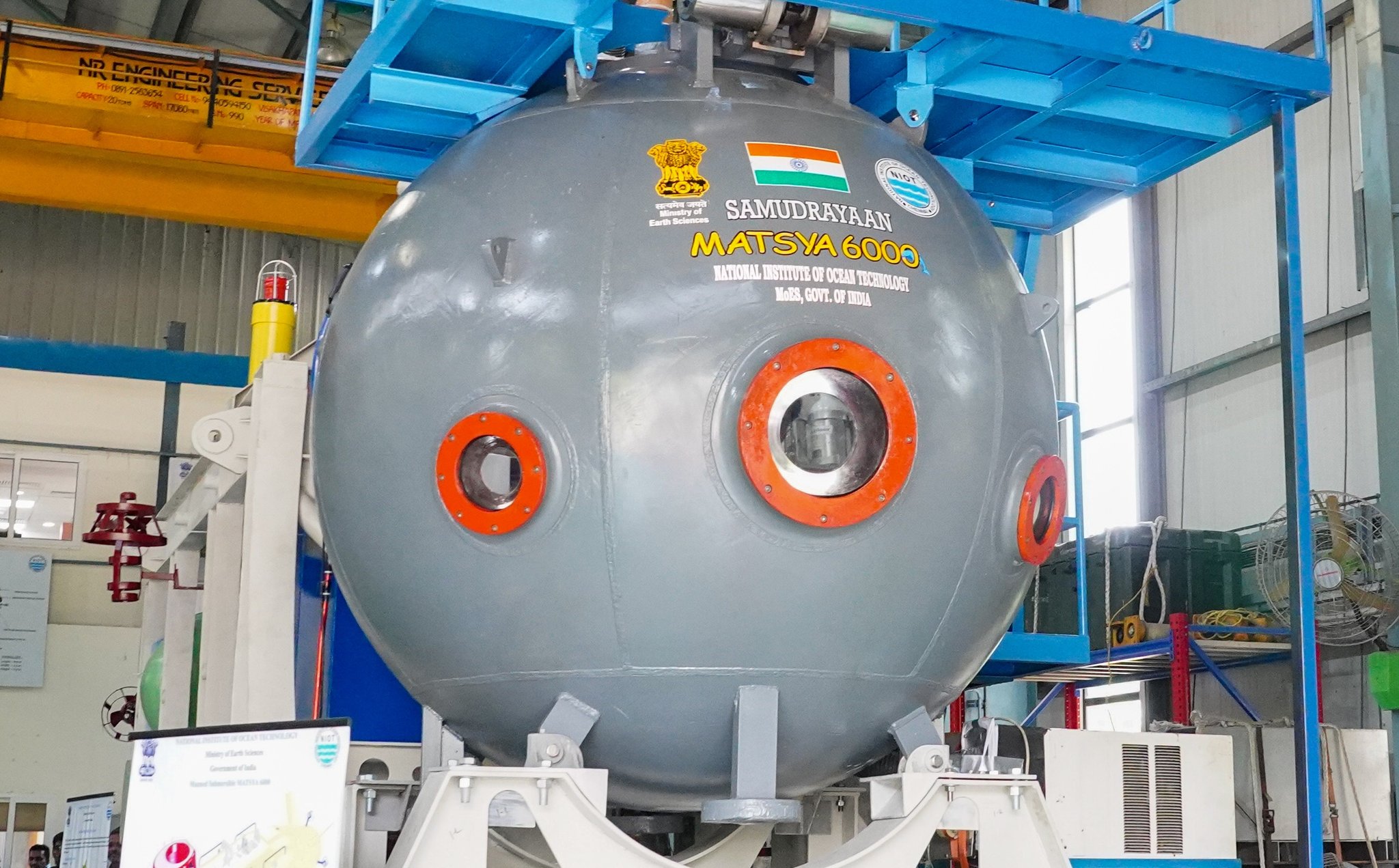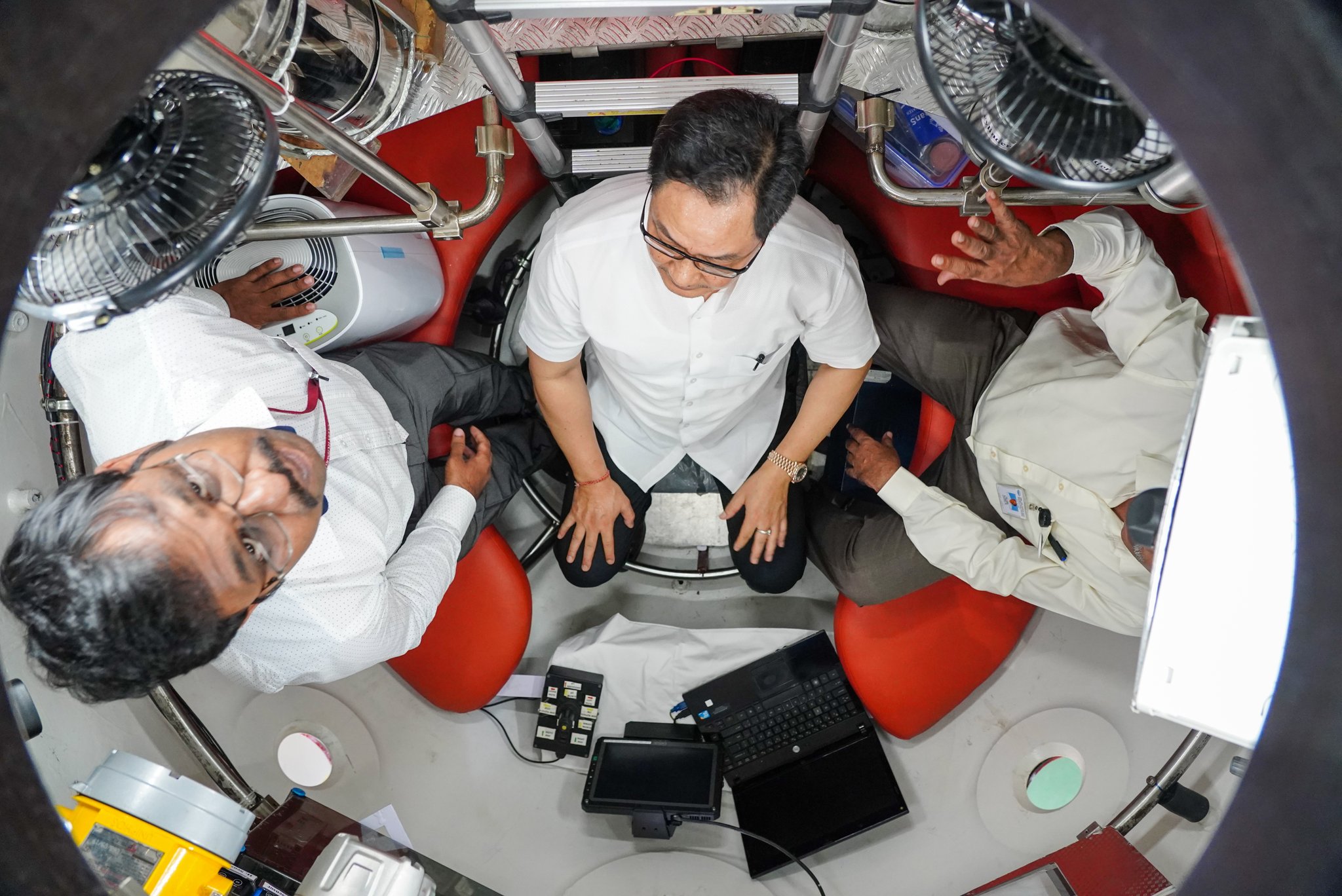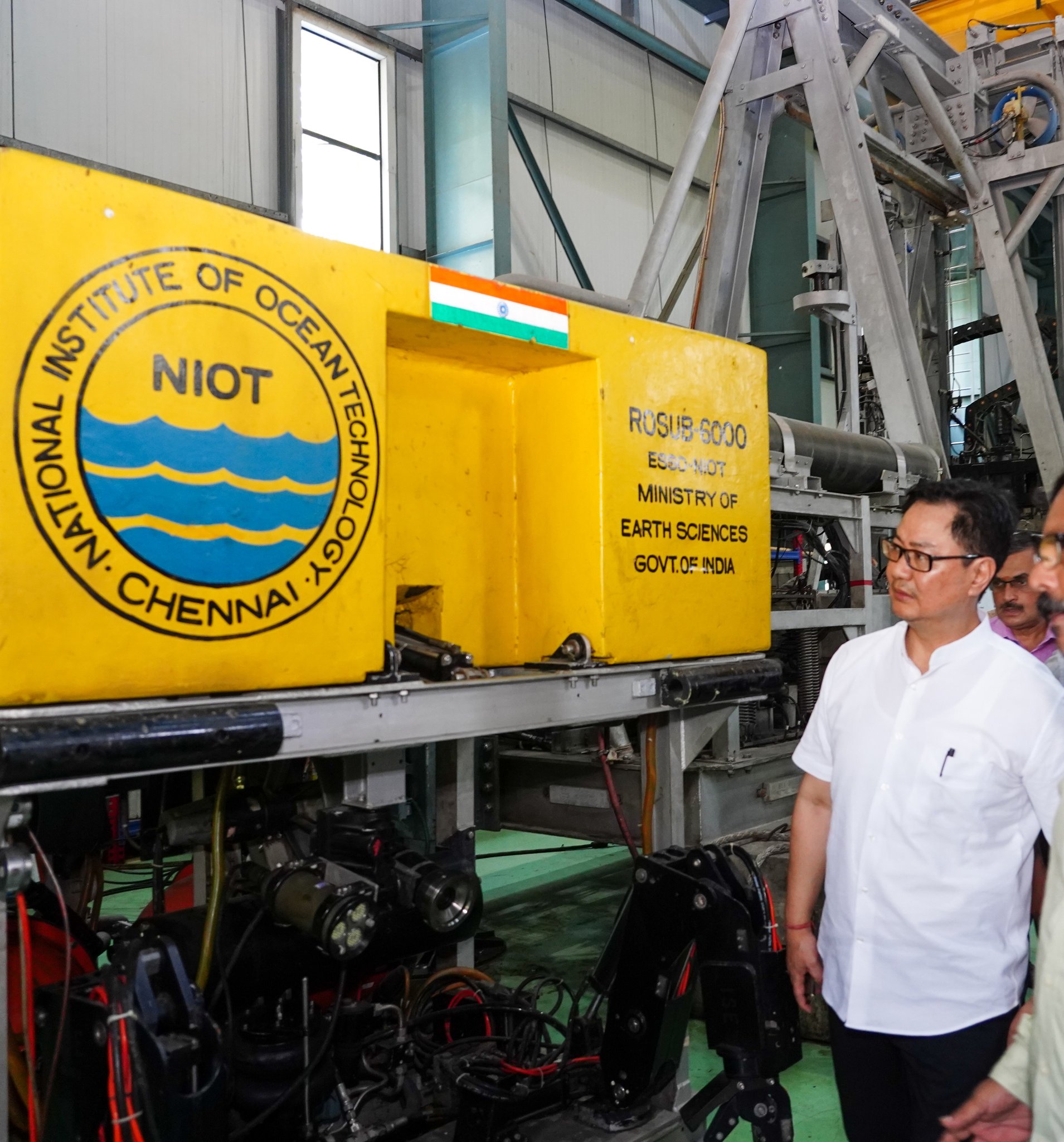India is attempting to build a deep sea manned submersible to go upto depths of around 6km below the surface.
https://twitter.com/KirenRijiju/status/ ... 8673269772
Samudrayaan: Here's Everything We Know About India's Plan To Send Three Explorers 6,000 Metre Deep In Bay Of BengalNext is "Samudrayaan"
This is 'MATSYA 6000' submersible under construction at National Institute of Ocean Technology at Chennai. India’s first manned Deep Ocean Mission ‘Samudrayaan’ plans to send 3 humans in 6-km ocean depth in a submersible, to study the deep sea resources and biodiversity assessment. The project will not disturb the ocean ecosystem. The Deep Ocean Mission supports the 'Blue Economy' vision of PM @narendramodi
ji, and envisages sustainable utilization of ocean resources for economic growth of the country, improve livelihoods and jobs, and preserve ocean ecosystem health.
Following a successful lunar mission, Indian scientists are gearing up for their next endeavor under Project Samudrayaan, which involves sending a team of three individuals 6,000 metre below the ocean's surface in an indigenous submersible.
The submersible, named Matsya 6000, has been in development for nearly two years and is scheduled for its inaugural sea trials off the Chennai coast in the Bay of Bengal early in 2024.
Scientists have been meticulously reviewing its design, materials, testing procedures, certification, redundancy measures, and standard operating protocols, especially in light of the Titan incident in June 2023, when a submersible imploded while taking tourists to the Titanic wreck in the North Atlantic Ocean.
The National Institute of Ocean Technology (NIOT) is overseeing the development of Matsya 6000.
M. Ravichandran, Secretary of the Ministry of Earth Sciences, stated, "The Samudrayaan mission is part of the Deep Ocean Mission, and we plan to conduct sea trials at a depth of 500 meters in the first quarter of 2024."
Also refer to:G A Ramadass, Director of NIOT, said that a 2.1-metre diameter sphere has been specially designed and constructed for Matsya 6000 to accommodate the three-person crew, as reported by Times Of India.
This sphere is constructed from an 80mm-thick titanium alloy, enabling it to withstand pressures equivalent to 600 times the atmospheric pressure at sea level at a depth of 6,000 metre.
While the submersible is designed for continuous operation of 12 to 16 hours, it is equipped with a 96-hour oxygen supply.
Project Samudrayaan: Submersible Matsya to take a dip in Bay of Bengal next year (same info as Swarajya link, but pasting snippets is a pain)
https://en.wikipedia.org/wiki/Deep_Ocean_mission
Indian Space Research Organisation developed the design of a crewed submersible capsule capable of travelling 6,000 m deep for the mission. The development was announced on the sidelines of the silver jubilee celebrations of the National Institute of Ocean Technology.[8] A deep-submergence vehicle named Matsya 6000 is under development. The first uncrewed trial of the vehicle was conducted on 27 October 2021 where the 'personnel sphere' was lowered up to a depth of 600 m, off the coast of Chennai. The trial was successful and received the certification for further development. Following the success of the trial, the "Samudrayaan" program was formally launched on 29 October 2021.


